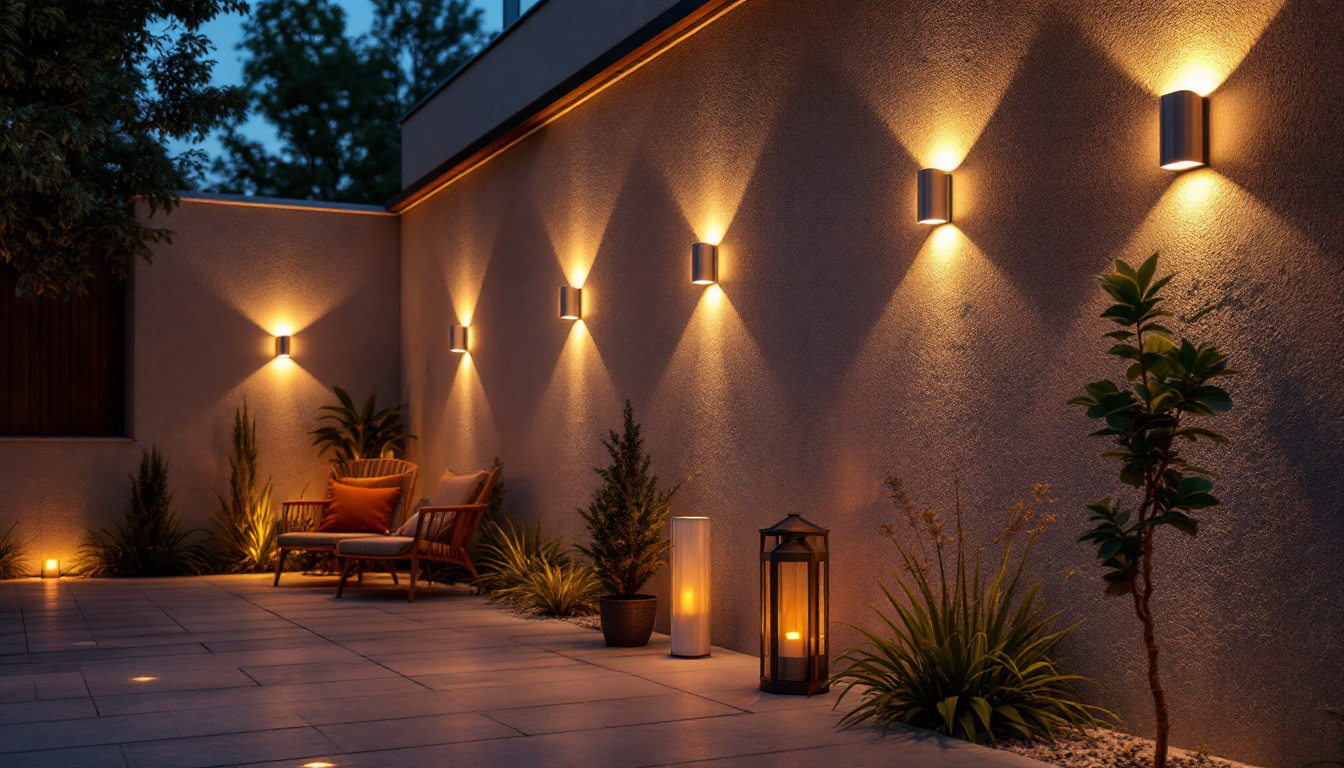
As the demand for sustainable and energy-efficient lighting solutions continues to grow, solar light post lights have emerged as a popular choice for both residential and commercial applications. However, despite their advantages, there are common pitfalls that lighting contractors can encounter when installing these systems. This guide aims to highlight these mistakes and provide insights to ensure successful installations.
Solar light post lights harness solar energy to provide illumination without the need for traditional electrical wiring. They are equipped with solar panels, rechargeable batteries, and LED bulbs, making them an eco-friendly option. However, understanding the technology and its limitations is crucial for effective installation.
Familiarizing oneself with the key components of solar light post lights is essential. Solar panels convert sunlight into electricity, while batteries store this energy for use during the night. The LED bulbs provide bright illumination, and the fixtures must be durable enough to withstand various weather conditions.
Lighting contractors should also be aware of the different types of solar lights available, such as those with motion sensors, dimming capabilities, or smart technology features. Each type may require different installation techniques and considerations. For instance, lights with motion sensors can enhance security by illuminating only when movement is detected, thus conserving battery life. Smart solar lights can be integrated into home automation systems, allowing users to control them via smartphone apps, which adds a layer of convenience and customization to outdoor lighting.
Solar light post lights offer numerous benefits, including reduced energy costs, lower maintenance requirements, and ease of installation. They are particularly advantageous in areas where running electrical wiring is impractical or costly. Additionally, they contribute to sustainability efforts by reducing reliance on fossil fuels.
Moreover, the aesthetic appeal of solar lights can enhance outdoor spaces, making them a desirable choice for landscaping projects. Understanding these benefits can help contractors effectively communicate the value of solar lighting solutions to clients. Beyond their practical advantages, solar light post lights also promote safety by illuminating pathways, driveways, and entrances, which can deter potential intruders and prevent accidents. Furthermore, many modern solar lights come with design options that complement various architectural styles, from traditional to contemporary, making them versatile additions to any property.
Even experienced contractors can make mistakes when installing solar light post lights. Recognizing these errors can help ensure a successful project and enhance client satisfaction.
One of the most critical steps in the installation process is conducting a thorough site assessment. Failing to evaluate the location can lead to poor performance of the solar lights. Factors such as shading from trees, buildings, or other structures can significantly reduce the amount of sunlight the solar panels receive.
Contractors should take the time to analyze the site during different times of the day to identify potential obstructions. Additionally, understanding the local climate and seasonal variations in sunlight can help in selecting the right type of solar light for the project. For instance, a site that receives full sun in the summer may be partially shaded in the winter, which could affect the solar lights’ performance. Furthermore, considering the angle of the solar panels is essential; they should be positioned to maximize exposure to sunlight, particularly during peak hours.
Battery capacity is another crucial aspect that contractors often overlook. The size and quality of the battery will determine how long the lights can operate after sunset. Using low-capacity batteries may result in dim lighting or lights that turn off prematurely.
When selecting solar lights, contractors should ensure that the battery capacity aligns with the expected usage and local weather conditions. In regions with prolonged cloudy days, opting for lights with larger batteries can provide a more reliable solution. Additionally, it’s important to consider the type of battery technology used; lithium-ion batteries, for example, tend to have a longer lifespan and better performance in varying temperatures compared to traditional lead-acid batteries. This choice can significantly impact the overall efficiency and longevity of the solar lighting system, ultimately leading to a more satisfactory outcome for clients.
The placement of solar light post lights can significantly impact their effectiveness. Proper positioning ensures optimal exposure to sunlight and enhances the functionality of the lights.
As mentioned earlier, sunlight exposure is paramount. When installing solar lights, contractors should position them in areas that receive direct sunlight for the majority of the day. This may require trimming back foliage or relocating lights to avoid shadowing.
Moreover, it’s important to consider the orientation of the solar panels. Ideally, they should face south (in the northern hemisphere) to maximize sun exposure. This simple adjustment can dramatically improve the efficiency of the solar lights. Additionally, it’s wise to monitor seasonal changes in sunlight patterns, as the angle of the sun shifts throughout the year. In winter months, for instance, the sun is lower in the sky, which may necessitate repositioning the lights to ensure they continue to receive adequate sunlight.
The height and angle at which solar light post lights are installed can influence their performance. Lights that are too low may not provide adequate illumination, while those that are too high may not effectively light the intended area.
Generally, a height of 7 to 10 feet is recommended for most solar light post installations. Additionally, angling the lights slightly downward can help direct the light where it is needed most, enhancing visibility and safety. It’s also beneficial to consider the surrounding environment; for example, if the lights are installed in a garden or pathway, ensuring they are at a height that illuminates the ground without causing glare for pedestrians is crucial. Furthermore, incorporating adjustable mounts can provide flexibility, allowing for fine-tuning of the angle and height as needed, which can be particularly useful in areas where landscaping may change over time or as plants grow taller.
While solar light post lights are generally low maintenance, neglecting regular upkeep can lead to diminished performance over time. Contractors should educate clients on the importance of maintenance to ensure longevity and optimal functioning. Additionally, understanding the specific components of solar lights can empower clients to take better care of their installations, ultimately enhancing their outdoor spaces.
Solar panels require periodic cleaning to remove dust, dirt, and debris that can obstruct sunlight. Contractors should recommend a cleaning schedule based on the local environment. In areas with heavy pollen, dust, or pollution, more frequent cleaning may be necessary. Furthermore, clients should be informed that seasonal changes can impact the accumulation of debris; for instance, autumn leaves or winter snow can significantly hinder solar efficiency if not addressed promptly.
Clients should be advised to use a soft cloth and mild soap to clean the panels, avoiding abrasive materials that could scratch the surface. This simple maintenance task can significantly enhance the efficiency of the solar lights. In addition, it may be beneficial to suggest that clients inspect the fixtures for any signs of wear or damage during cleaning, as early detection can prevent more costly repairs down the line.
Over time, batteries will degrade and may need replacement. Educating clients about the signs of battery failure, such as dimming lights or inconsistent performance, can help them take proactive measures. Most solar light batteries have a lifespan of 2 to 5 years, depending on usage and environmental conditions. It’s also worth noting that extreme temperatures can affect battery performance; therefore, clients in regions with harsh winters or scorching summers should be particularly vigilant about monitoring their battery health.
Contractors should offer guidance on selecting compatible replacement batteries and the best practices for installation to ensure continued performance of the solar lights. Additionally, clients might benefit from understanding the different types of batteries available, such as lithium-ion versus nickel-cadmium, and how each type can impact the overall efficiency and longevity of their solar lighting systems. Providing this knowledge can empower clients to make informed decisions that align with their specific needs and environmental conditions.
Effective communication with clients is vital for the successful implementation of solar light post lights. Educating them about the functionality and limitations of these systems can lead to better satisfaction and fewer misunderstandings.
Clients should be made aware of the limitations of solar light post lights, including their dependence on sunlight and potential performance issues during extended cloudy periods. Setting realistic expectations can prevent dissatisfaction and reinforce the value of the installation.
Additionally, contractors should explain the importance of selecting the right model based on the specific needs of the project. For instance, if a client desires brighter lights for security purposes, they may need to invest in higher-capacity solar lights or consider supplementary lighting options.
Encouraging clients to provide feedback after installation can help contractors identify areas for improvement and enhance future projects. Open lines of communication can also facilitate troubleshooting if issues arise post-installation.
Contractors should establish a follow-up schedule to check in with clients, ensuring that the solar lights are functioning as intended and addressing any concerns they may have. This proactive approach can foster long-term relationships and build trust.
Solar light post lights present a valuable opportunity for lighting contractors to offer sustainable and efficient lighting solutions. By avoiding common mistakes in installation, understanding the technology, and educating clients, contractors can enhance their service offerings and ensure successful projects.
As the market for solar lighting continues to expand, staying informed about best practices and innovations will be essential for contractors looking to thrive in this evolving industry. By prioritizing quality installations and client education, contractors can position themselves as trusted experts in solar lighting solutions.
Ready to elevate your lighting installations with the best in solar light post lights? At LumenWholesale, we provide lighting contractors with the highest quality, spec-grade lighting products at unbeatable wholesale prices. Say goodbye to local distributor markups and hello to superior lighting solutions that meet the most rigorous industry standards. With our hassle-free bulk buying and free shipping, you can ensure your projects shine with reliability and performance, all while keeping your costs down. Don’t compromise on quality or value—choose LumenWholesale for your lighting needs. Discover our extensive selection and experience the perfect blend of quality, affordability, and convenience. Wholesale Lighting at the Best Value is just a click away.

Discover how outdoor wall mounted light fixtures can transform your exterior spaces with enhanced illumination and style.

Discover the key differences between T12 and T8 lighting in this comprehensive guide.

Unlock exclusive savings with F150Leds discount codes tailored for lighting contractors.

Discover the essential insights into LED wall lights for outdoor spaces as we address lighting contractors’ most frequently asked questions.